August 27, 2013
I tend to think of most birds as being more specialized in their choice of habitat during the breeding season than at other times of year. One of my favorite groups of neotropical migrants is the warblers. Many warbler species breed mostly in one habitat, but occur in a wide range of habitat types during migration. Cape Mays, blackpolls, yellow-rumps – all are breeding birds primarily of spruce-fir forest, yet when passing through Florida on their way to or from the tropics, they can be found at times in pine forests, hammocks, disturbed areas, gardens, and so on. In the case of the ubiquitous yellow-rump, I’ve seen them on numerous occasions foraging in aquatic habitats along with palm warblers, gleaning insects off of floating mats of water lettuce.
Yellow warblers are, for me, an entirely different story. This morning while doing a quick scouting trip for my upcoming Ornithology field trips, I saw my first yellow warbler of the season. This species has one of the largest breeding ranges of any North American warbler, extending from the Carolinas up into the maritime provinces of Canada, all across the prairie provinces and through most of Alaska, and down into the mountains of Mexico and Baja California. In Florida, they breed only in south Florida and the Keys, nesting in mangroves. Throughout the rest of the state, they are transient migrants only. In recent years, I’ve seen yellow warblers very infrequently in Florida, and nearly always as lone individuals. It’s always been a puzzle to me why I don’t see them more often.
That hasn’t always been the case, though. For nearly seven years, between January 2000 and October 2006, I conducted weekly bird surveys for the St Johns Water Management District at Emeralda Marsh Conservation Area, and when yellow warblers were passing through, I saw them in huge numbers. During August and September, they were often the most abundant migrant I saw, sometimes in numbers of more than 100 in a day. All but one of the photographs here are scans from old slides taken when I was doing the Emeralda surveys.
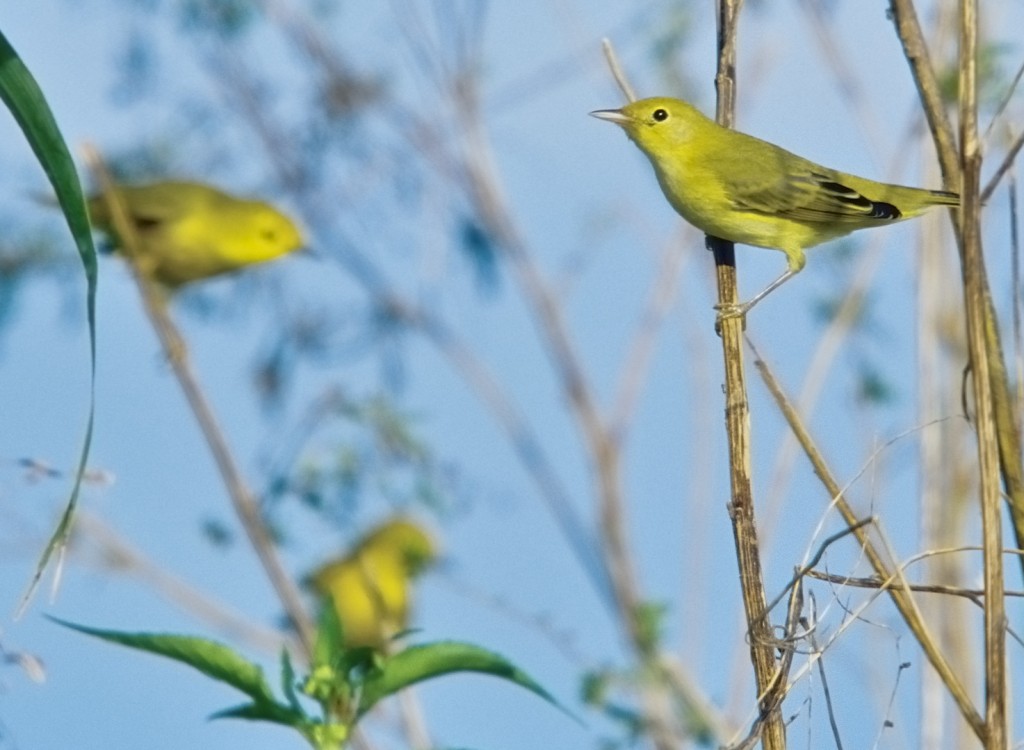
It wasn’t uncommon to see as many as 10 yellow warblers in one tree, though getting them all in one photograph is challenging.
The graph below shows their pattern of seasonal occurrence and abundance at Emeralda; each point represents one day’s census, and the fitted line is an average of all 7 years’ data. A couple of things stand out. One is simply abundance. Yellow warblers are among the earliest of the migrating warblers; they first show up in late July, along with the first prairie warblers, but they usually far outnumbered the prairies. The second striking feature of this figure is the complete absence of migrating yellow warblers in spring. Never saw one. This coincides with the conclusions of Stevenson and Anderson in The Birdlife of Florida; they categorize yellow warblers as an uncommon to rare spring migrant, and the number of structure-killed specimens is overwhelmingly biased towards the late summer and fall. It seems that this species takes different migratory pathways in spring and fall.
Still, that doesn’t explain why yellow warblers can be so overwhelmingly abundant at one site, and so hard for me to find at others. I think it’s due to their unusual degree of habitat specificity when they are migrating. The areas where I reliably found them at Emeralda were fairly uniform, though Emeralda Marsh Conservation Area contains a diversity of habitats. I almost always found yellow warblers there at ecotones between open hammock or willow thickets and nearby wetlands. My survey route at EMCA included several miles of levee roads passing through this type of habitat. I don’t recall ever seeing yellows actually in the many patches of hammock scattered along my route, only at the edges. Edges and proximity to open wetlands (wet prairie, marsh, impoundments) seem to be the keys to attracting yellows when they are passing through Florida.
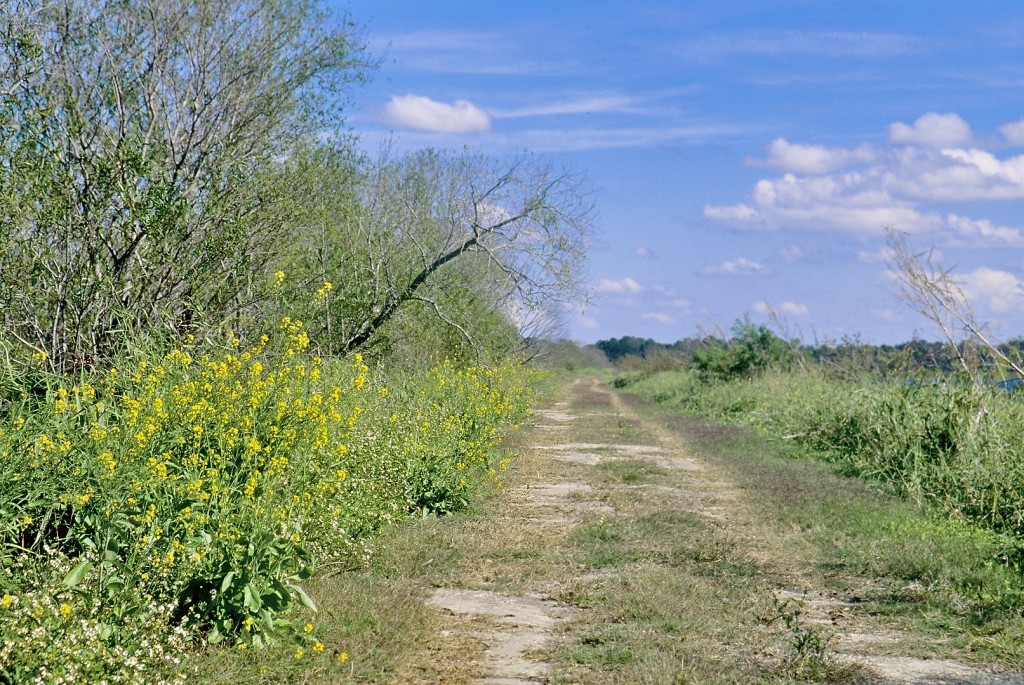
Yale-Griffin Canal levee, Emeralda Marsh Conservation Area. The fringing willows and extensive surrounding wetlands provide ideal habitat for migrating yellow warblers.
I don’t bird much in those kinds of habitats these days, now that I’m no longer one of the privileged few that has unfettered access to drive through Emeralda when the yellows are passing through in large numbers. My people don’t do wetlands much. Unless there’s a levee or boardwalk passing through them, any kind of wetland is pretty much off-limits to those of us who travel on four wheels. That’s not how we roll.
When I’m birding in late summer and find clumps of willows or a woodland edge up against a wetland, I’m always looking for yellows, but have never found them anywhere else in such abundance as Emeralda. It’s probably a matter of scale. Emeralda is a relatively big chunk of contiguous habitat (over 7000 acres), the largest proportion of which comprises wetlands and impoundments. These wetlands are surrounded and bisected by miles of levees, many of which produce exactly the sorts of habitat conditions the yellows seem to crave. One part of my census route, the levee paralleling the Yale-Griffin canal, was nearly two miles long, bounded on the north and south along most of it length by shallow impoundments, and featuring a corridor of dense willows along nearly it’s entire length. There were nearly always yellow warblers there in August and early September.
Conservation biologists stress the importance of preserving big chunks of habitat, and decry the fragmentation of habitat into little postage-stamp sized pieces surrounded by completely dissimilar, often developed, habitats. Even though floristically and structurally small tracts may be virtually identical to larger pieces of habitat, they don’t maintain the same levels of diversity as large, undisturbed areas do. Habitat selection by migrating yellow warblers illustrates that point beautifully.
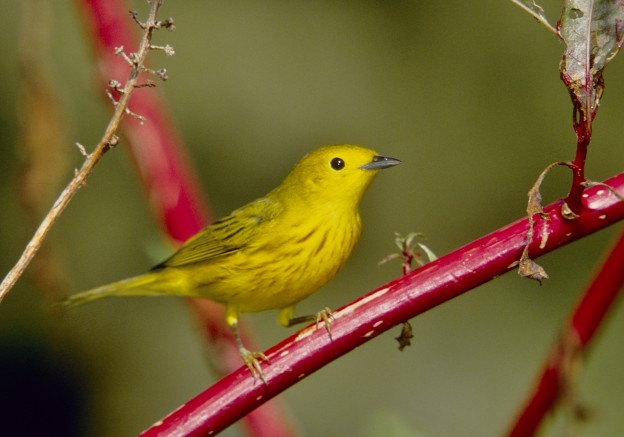
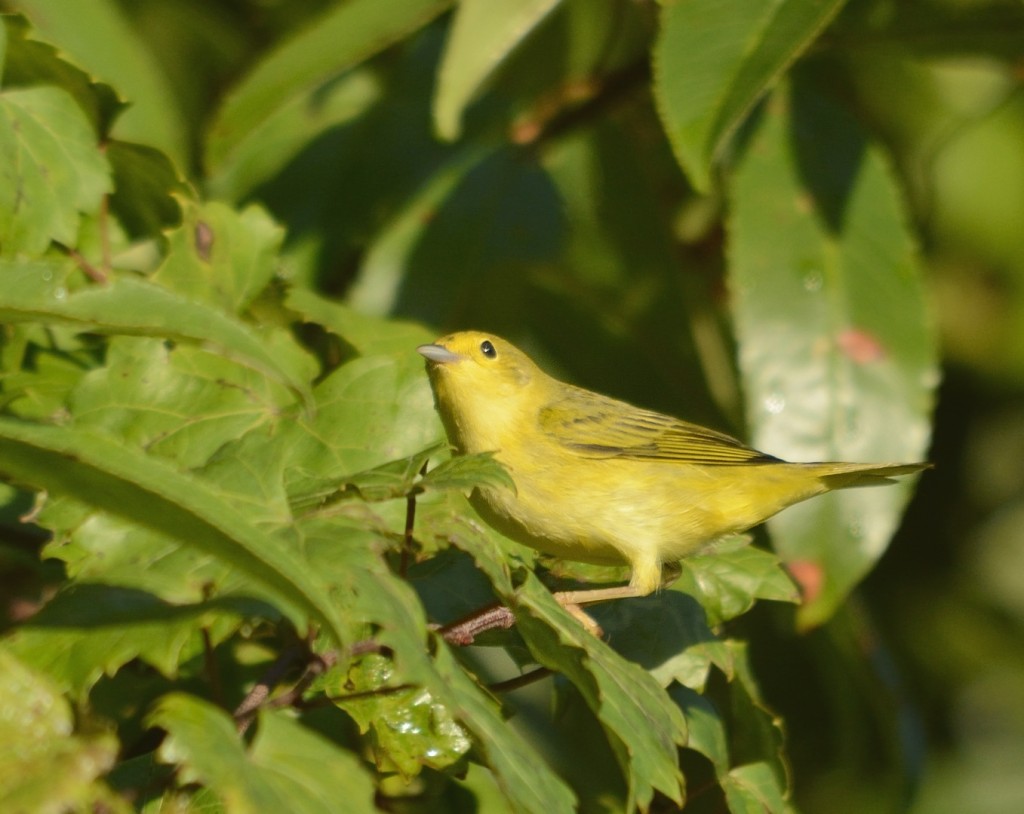
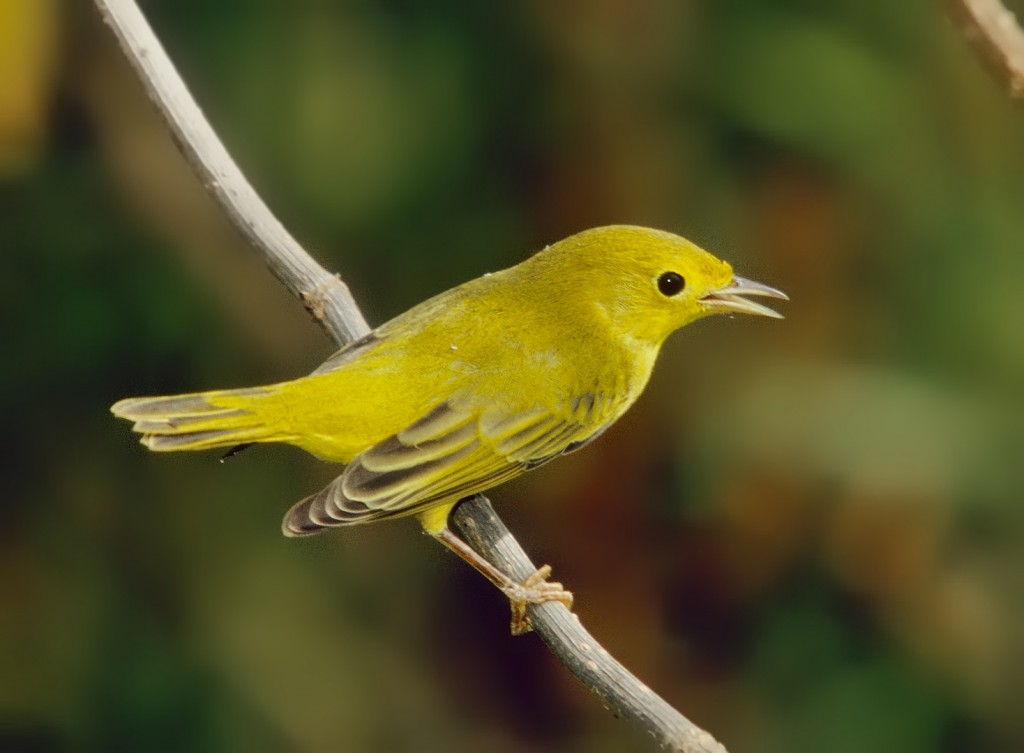
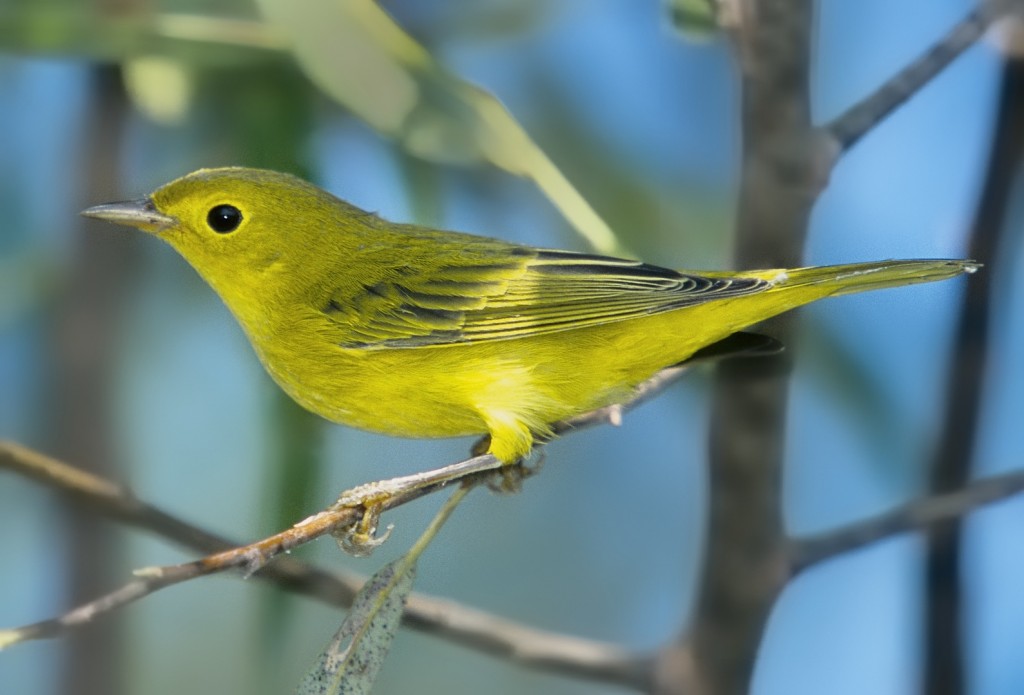
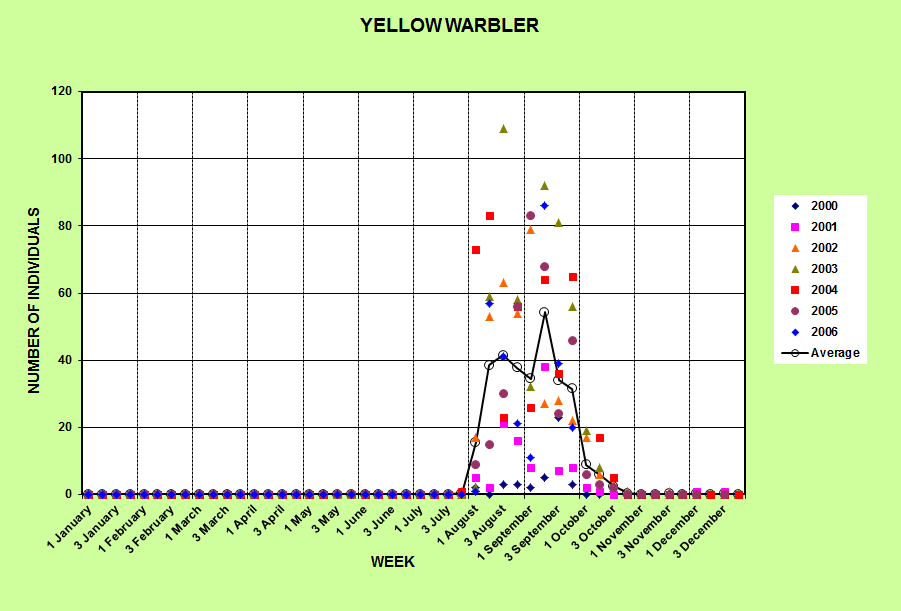
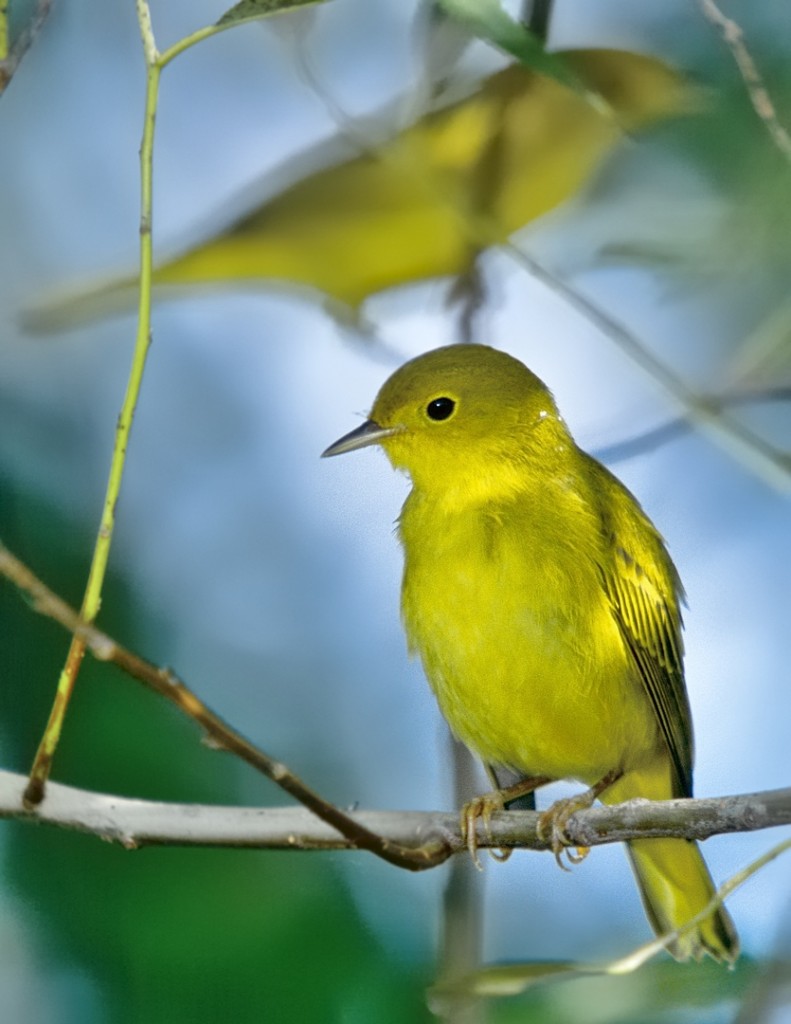
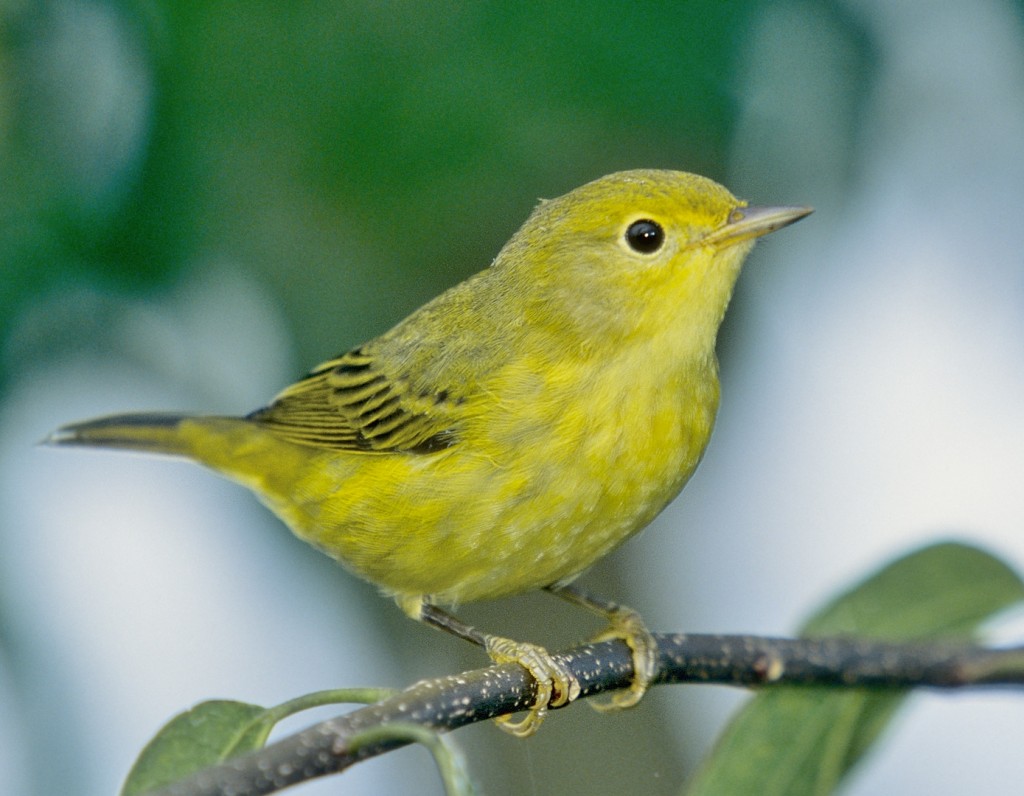
Very educational, as usual, Peter. Doesn’t Lake Woodruff National Wildlife Refuge satisfy the yellow warbler’s requirements, too? Have you ever seen them there in good numbers?
John
I’ve seen them there occasionally, John, but never more than a couple. Most of the levees at Woodruff don’t have dense enough cover along the sides, I think. The one time I saw a couple there was when Pool 3 was mostly dry and choked with tall vegetation; lots of the big weed Amaranthus australis. They were in there. At Emeralda, they also frequented dense clumps of Sesbaenia.
But I don’t usually bird much at Woodruff in August, or even September, when they peak. Too damned hot.
Pingback: Hunting ghosts | Volusia Naturalist